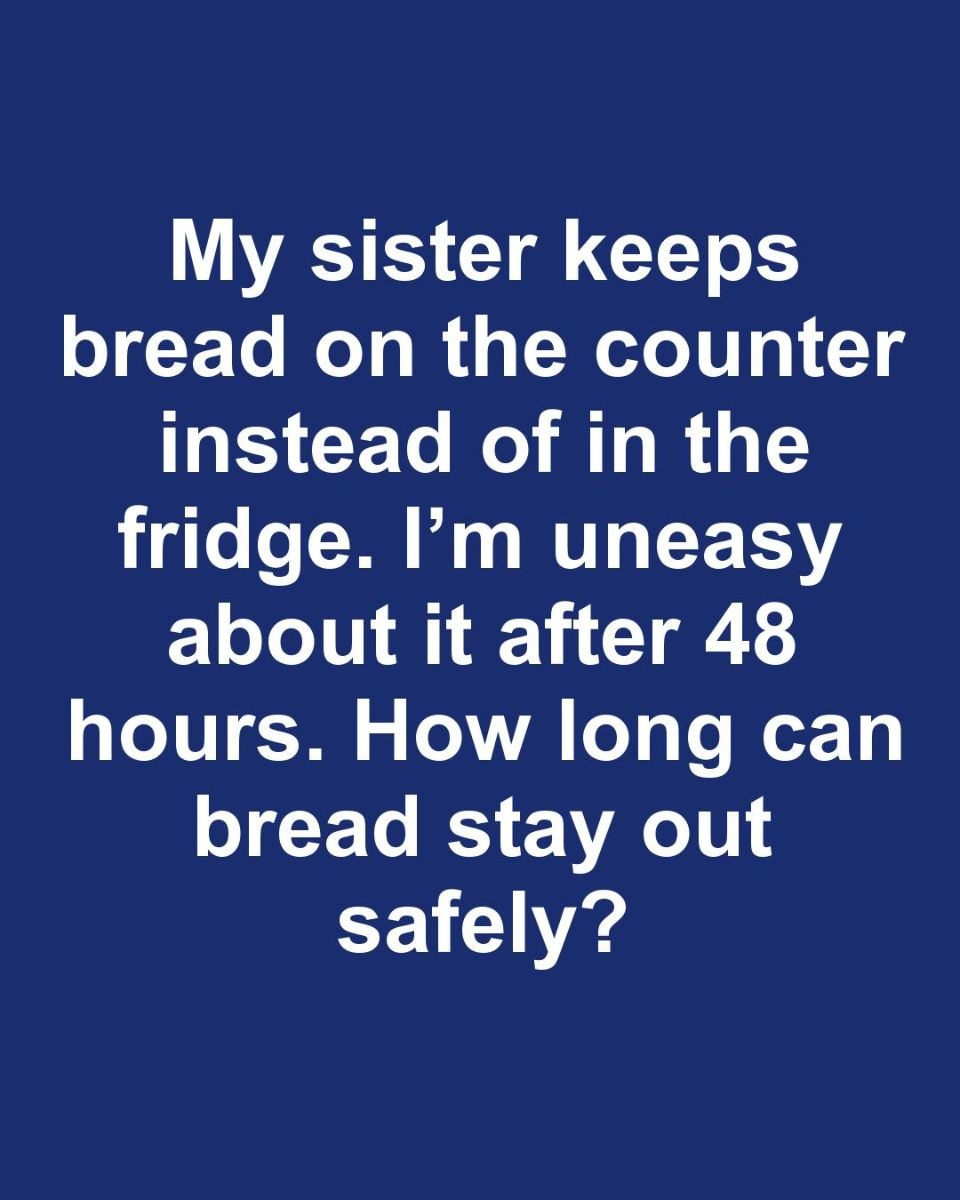Bread is a staple in many households, cherished for its versatility and comforting taste. However, the debate over the best way to store bread to maintain its freshness and safety is ongoing. Some people, like my sister, prefer to keep bread on the counter, while others opt for refrigeration. This article explores how long bread can safely stay out and the factors that influence its shelf life.
Understanding Bread Shelf Life
Bread’s shelf life can vary depending on its ingredients and storage conditions. Typically, store-bought bread contains preservatives that extend its freshness for about 5 to 7 days when stored at room temperature. Homemade bread, which often lacks these preservatives, may only last 2 to 3 days on the counter. Understanding these timelines is crucial for ensuring that bread remains safe to eat.
Factors Affecting Bread Freshness
Several factors influence how long bread stays fresh. These include humidity, temperature, and exposure to air. High humidity can promote mold growth, while exposure to air can cause bread to dry out and become stale. The type of bread also matters; for example, sourdough bread naturally resists mold due to its acidic environment.
The Science Behind Bread Spoilage
Bread spoilage is primarily caused by mold and staling. Mold thrives in warm, moist environments and can appear as fuzzy spots on the surface of bread. Staling, on the other hand, is a result of the starch molecules in bread crystallizing over time, leading to a hard and dry texture. Understanding these processes helps in choosing the right storage method.
Comparing Bread Storage Methods
There are several methods for storing bread, each with its pros and cons. Keeping bread on the counter is convenient and maintains its texture, but it may spoil faster. Refrigeration slows mold growth but can cause bread to stale more quickly. Freezing is another option that preserves bread for months but requires defrosting before use.
The Case for Refrigerating Bread
Refrigerating bread can extend its shelf life by slowing down mold growth. This is particularly beneficial in humid climates where mold can develop rapidly. However, refrigeration can also cause bread to lose its softness and become stale faster due to the crystallization of starch molecules.
The Argument for Keeping Bread on the Counter
Storing bread on the counter preserves its texture and flavor, making it more enjoyable to eat. This method is ideal for those who consume bread quickly, as it remains soft and fresh for a few days. Additionally, it eliminates the need to plan ahead for defrosting or reheating.
Signs That Bread Has Gone Bad
It’s important to recognize when bread is no longer safe to eat. Visible mold is a clear indicator that bread should be discarded. A sour or off smell can also signal spoilage. If bread feels excessively hard or dry, it may be stale but not necessarily unsafe, though it might not be pleasant to eat.
Expert Opinions on Bread Storage
Experts suggest that the best storage method depends on how quickly you plan to consume the bread. For short-term use, keeping it on the counter is fine. For longer storage, freezing is recommended. Some experts advise against refrigeration due to its impact on texture, unless mold is a concern.
Best Practices for Bread Storage
To maximize freshness, store bread in a cool, dry place, ideally in a bread box or a paper bag that allows some airflow. If refrigerating, use an airtight container to minimize staling. For freezing, slice the bread first and store it in a freezer bag, removing as much air as possible.
Tips for Storing Bread Effectively
- Use a Bread Box: A bread box provides airflow, which helps to keep the bread fresh while preventing it from becoming too dry.
- Avoid Plastic Bags: While convenient, plastic bags can trap moisture and promote mold growth. Opt for paper bags or cloth covers instead.
- Freeze Extra Bread: If you buy bread in bulk or make it at home, freezing it in slices allows you to pull out only what you need without wasting any.
- Cool the Bread Before Storing: If you’ve baked fresh bread, allow it to cool completely before storing it to avoid condensation inside the storage container.
Conclusion: Finding the Right Balance
Ultimately, the best way to store bread depends on personal preference and consumption habits. By understanding the factors that affect bread’s shelf life and spoilage, you can make an informed decision. Whether you choose to refrigerate, freeze, or keep bread on the counter, the goal is to enjoy it at its best while ensuring safety.
FAQs
How long can bread stay out at room temperature?
Bread can typically stay out at room temperature for about 5 to 7 days for store-bought bread, and 2 to 3 days for homemade bread. However, its freshness will depend on the type of bread and environmental factors.
Is it better to store bread in the fridge or on the counter?
It depends on how quickly you plan to eat the bread. Storing it on the counter is best for short-term use, while refrigeration is better for extending the bread’s shelf life, especially in humid climates.
Can I freeze bread?
Yes, freezing bread is a great way to preserve it for longer periods. Slice it before freezing to allow for easy thawing and to avoid waste.
What are signs that my bread is spoiled?
Signs that bread has gone bad include visible mold, a sour or off smell, and excessive dryness or hardness. Moldy bread should be discarded immediately.
How can I keep bread fresh longer?
To keep bread fresh longer, store it in a bread box or paper bag in a cool, dry place. For longer storage, freeze the bread, and if refrigerating, use an airtight container to minimize staling.

